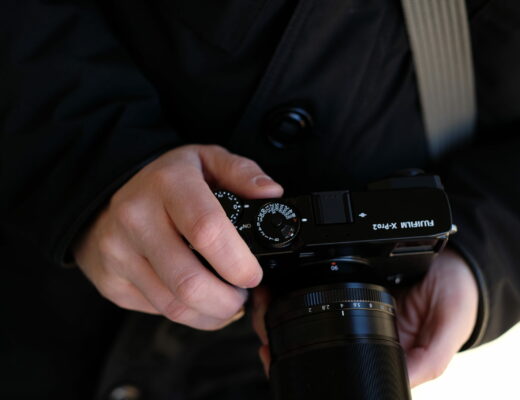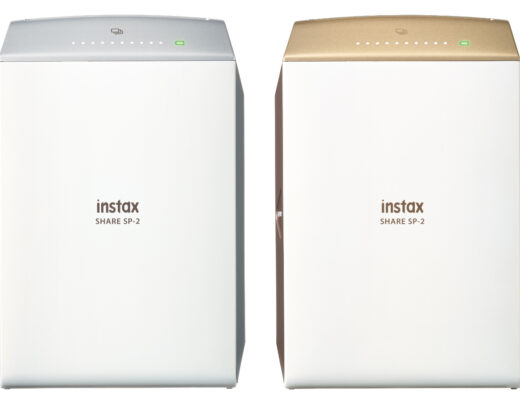Reports are coming in across all platforms of happy X-T3 users, which we love to read about and we love to see the images everyone is producing too. Make sure to get involved with our Facebook page where lots of images and daily conversations are had about all aspects of Fujifilm. Click here for the FujiLove Facebook Readers’ Group.
Weekly News Digest is brought to you by the new Exposure X4 from Alien Skin Software. Exposure is the award-winning photo editor and organizer that provides unmatched creative tools and special effects, fast layering and retouching, and outstanding Fujifilm RAF processing quality. Exposure X4 features improved shadows and highlights, smart collections, perspective correction, a Lightroom migration tool, freely moveable light effects, and more. Exposure is FujiLove’s photo editor of choice. We invite you to try it free today.
Title image edited using Exposure X4, captured with the X-T3 using the XF8-16mm lens. Make sure you also check out our look at all the new features in the updated version of the program.
Mock-up lenses at Photokina
We knew they were coming, but it was nice to see the mock-up versions of all the lenses that Fujifilm are currently working on and developing. It’s great to see how these are shaping up.
As a quick summary:
There are the three new GF lenses, bringing the range to 11 and giving a wide range of options, not forgetting the H mount & other third-party adapters.
- GF100-200mmF5.6 R LM OIS WR
- GF45-100mm F4 R LM OIS WR
- GF50mmF3.5 R LM WR
XF33mmF1 R WR large diameter prime lens
XF33mmF1 R WR is a standard large diameter prime lens. This ultra-fast lens will be the world’s first mirrorless lens with F1.0 maximum aperture and AF capability.
XF16mmF2.8 R WR compact prime lens
XF16mmF2.8 R WR is a wide lens in the compact prime lens category. It has the focal length equivalent to 24mm in the 35mm format and F2.8 maximum aperture, making it the perfect choice for landscape and travel photography. It complements the already-released XF23mmF2 R WR, XF35mmF2 R WR and XF50mmF2 R WR series of small, stylish prime lenses, covering wide-angle to mid-telephoto focal lengths.
XF16-80mmF4 R OIS WR standard zoom lens
The standard zoom lens XF16-80mmF4 R OIS WR features a broad focal length range from wide angle (equivalent to 24mm) to mid-telephoto (122mm in the 35mm format), while keeping a constant F4.0 maximum aperture. Its broad focal range makes it a very versatile lens capable of covering a wide range of shooting scenes.
Venus Optics
During Photokina, Venus Optics announced that one of the new range of lenses will provide the widest native lens option for the GFX. It will be a 17mmF4 lens. I have to admit, Laowa was not a name that I knew before finding this info but I will make contact with the company and make some investigations as to their link and future ranges regarding Fujifilm and support of the X-mount and the GF mount. From what I can tell via the website and social media, they do have some pretty interesting lenses and a good customer base. If you have used one of these lenses, please do get in touch. I would love to know more via dave@fujilove.com.
‘As the widest available native lens option for Fujifilm G-mount cameras, our coming 17mm F4 Zero-D GFX has a field of view equivalent to 13mm in 35mm format (113°). Featuring a close-to-zero distortion and 86mm filter thread, this lens is ideally suited for landscape, architecture & interior photography.’
‘We currently design, manufacture, market and distribute camera lenses under the brand name of ‘LAOWA’. Represented by renowned distribution partners in more than 40 countries in America, Europe, Asia, and Africa, we are hoping to spread our passion for photography to people from around the world.’
Kipon Ibelux 40mm f/0.85 Mark II
In 2020 Fujifilm will be bringing out an f/95 lens. In theory, in air, lowest possible N in air is f/0.5. The fastest ‘mainstream’ lens I have seen is the Zeiss 50mmF0.7. The lens was designed and made specifically for the NASA Apollo lunar program to capture the far side of the Moon in 1966. In total there were only 10 lenses made. One was kept by Carl Zeiss, six were sold to NASA, and three were sold to Kubrick, in which these were used when shooting his film Barry Lyndon, which allowed him to shoot scenes lit only by candlelight. Pretty much all photographic lenses have maximum and minimum apertures. Most range from about f/4 to about f/16. Some lenses can open up even more to around f/2, with the widest lenses opening up to f/1.2. While I was writing my last article for the FujiLove magazine, I did quite a bit of research into what ‘aperture’ is in terms of photography. You can find the article ‘What Aperture is & How it works’ in the September 2018 issue. When I say this lens is fast, I really mean it.
Details online are tough to find, as there is not really anything concrete from the manufacturer about this updated version of the lens released in 2013. Reports and reviews of this lens had a mixed response but I do wonder if this new lens has had enough updates to correct and address the issues with the predecessor. We will try and keep everyone updated.
Back at the start of last month, Kipon released V1.15 firmware for autofocus adapters of Fujifilm X Series and GFX cameras.
Links to official Fujifilm events around the world
Want to get in touch? Email us at newsroom@fujilove.com.


















